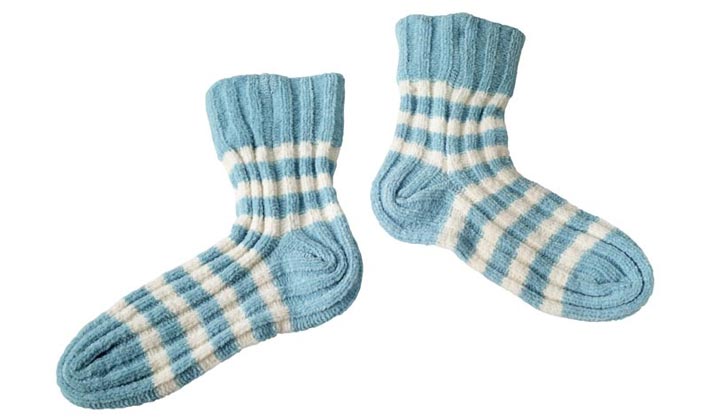 Socks may only peak out from the bottom of a pair of pants or be hidden entirely in a pair of boots but they are an important part of our wardrobe. Socks keep our feet warm and dry and protect them from painful, and potentially serious, rubs and ulcers. Although you may not give much thought to your socks, you should take them seriously. One of your biggest considerations should be the material your socks are made from.
Socks may only peak out from the bottom of a pair of pants or be hidden entirely in a pair of boots but they are an important part of our wardrobe. Socks keep our feet warm and dry and protect them from painful, and potentially serious, rubs and ulcers. Although you may not give much thought to your socks, you should take them seriously. One of your biggest considerations should be the material your socks are made from.
Cotton socks are by far the most popular because they are inexpensive and easy to find. However, cotton absorbs sweat, saturates quickly and dries slowly which means once your feet get wet they will stay wet. Also, cotton doesn’t have insulating properties so cotton socks won’t keep your feet warm and cold feet are uncomfortable, can lead to blisters and provide a great environment for fungus to grow. If you’re going to be wearing your socks for a prolonged period, or will be participating in a sport or active hobby, cotton socks are not the best choice for you.
There are a wide variety of synthetic socks available today including polyester, acrylic, nylon, spandex and polypropylene. Synthetics are durable, quick drying, keep their shape, provide a snug fit and help wick moisture away to keep your feet dry. Although synthetic socks are a good choice for your time spent playing a sport, they may not keep you cool in the heat and they can lose their insulating properties when they get wet.
Wool socks have come a long way from the scratchy, itchy styles worn in years past. Today’s Merino wool socks are soft and thin. Unlike cotton, wool is thermostatic, which means it keeps your feet warm when it is cold and cool when it is warm. Wool also repels water and absorbs up to 30 per cent of its weight in water so wool socks will help keep moisture away from your skin. If your feet are dry, less bacteria will grow and there will be less odour. The downside of wool is it is more expensive than cotton and dries slower than synthetics. Balance the higher price with the benefits by purchasing one or two pairs of good wool socks for active, outdoor activities.
When you select your socks each morning don’t just consider the style and colour. Think about what activities you will be doing that day and choose the sock materials that are most appropriate. It will make a real difference to your feet.
By Jennifer Gould Andrew C. Ped Tech (C) C Ped (C) Fredericton, New Brunswick
